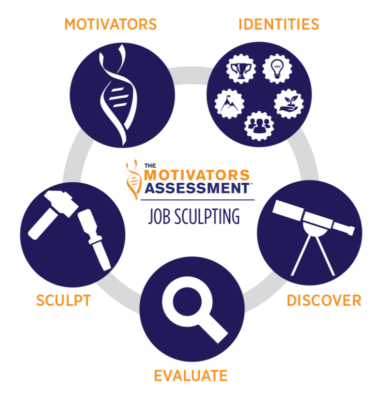Motivate Students According to Who They Are
In a performance-driven school culture, how do you keep kids motivated?
I’ve always believed that there’s more than one way to motivate students. The key is to make them feel that they have control over their destiny. If that sounds like a reach, think about what we as adults work for. We don’t just work to pay the bills: some of us work to gain autonomy over our lives, some of us work for the challenge, and some to achieve a higher goal.
Children may not be able to articulate why they’re motivated to do assignments just yet, but they have similar goals. To most of them, a good grade is a reward. But a good grade is only one piece of the puzzle of how to motivate students.
Most schools are part of this country’s test-driven educational culture and are set up so that students earn grades for performance. Consequently, the grade is the reward. But think about the student who isn’t motivated by the promise of a good grade – who believes he is stupid and destined for poverty or failure. That student doesn’t care about grades at all. How can teachers motivate him to do assigned work and boost his grades? How do we make him care?
A game-changing idea
What if you could ignite a student’s motivation, and build their confidence, by associating them with an identity and its specific behaviors and motivators? For teachers in crowded, time-crunched classrooms, this could be a game-changer.
 Adrian Gostick and Chester Elton, authors of What Motivates Me: Put Your Passions to Work, detailed five different identities of people that are motivated in different ways. These identities were given the titles of Builders, Caregivers, Reward-Driven, Thinkers, and Achievers. Now, Gostick and Elton surveyed adults, and their identities were built from this study of 850,000 adults and what motivated them. Much, if not all, of their findings applies to children, also.
Adrian Gostick and Chester Elton, authors of What Motivates Me: Put Your Passions to Work, detailed five different identities of people that are motivated in different ways. These identities were given the titles of Builders, Caregivers, Reward-Driven, Thinkers, and Achievers. Now, Gostick and Elton surveyed adults, and their identities were built from this study of 850,000 adults and what motivated them. Much, if not all, of their findings applies to children, also.
Builders, for example, like having a purpose, and like it when their work matters. They tend to work well in groups, too. Likewise, caregivers, may like working in groups for a different reason: They are very social and are motivated to make things better for others. Achievers may pick the toughest goals, with an eye on accomplishment; they see the achievement as their reward. Thinkers like to solve problems on their own.
Teachers who are challenged to motivate their students in new ways may find effective solutions in studying these traits and applying these identities to students – without telling them directly. For example, give a thinker a choice of assignments so they feel more in control of their environment. A builder may get a huge boost of confidence by being asked to help a fellow student with an assignment during class. Place a caregiver in charge of distributing materials for a lesson and see how positively they react to this new responsibility.
A builder at heart
I had a student in class who would never get his homework done. He was up out of his chair constantly. You know these kids: They’re really smart, but they’re not turning their work in. One day I had the class doing independent work, and I was going from student to student to help them out. One student, Danny, needed extra help, Jimmy was already bouncing around the room, and there was only one of me. I said, “Jimmy, I know you know how to do this. Would you mind helping Danny? Would you show him how to do it?”
What happened next was incredible. It was one of those things as a teacher where you go, “Wow!” Jimmy immediately sat down with Danny, and he performed like the best teacher in the world. The two of them sat there, completely focused, for the rest of the period. He helped Danny get all the work done – the whole assignment, even though he didn’t do his own.
It left me with a bit of a dilemma in grading Jimmy. Should I give them the same grade? Both their names were on the paper; they both did the assignment. Ultimately I gave Jimmy the same grade because I felt it would be a real motivator for him, although other teachers might answer that question differently.
That AHA! Teaching moment happened before I’d read What Motivates Me, but after reading the book I realized that Jimmy was either a builder or a caregiver. And on that day, I’d hit on exactly what motivated him to do the work.
Trying new motivational tools
Gostick and Elton’s book includes a motivator assessment, which is also available online – so teachers can try it out for themselves and look over the detailed descriptions about each personality type. It could help foster some ideas on motivating students with different personalities. (I’m including a non-affiliate discount code for the assessment at the end of this article.)
In a time-starved classroom, trying out new motivational tools may be difficult. Teachers might work in alternative creative assignments and responsibilities as best they can. Possibly, motivate and engage students by providing optional assignments or responsibilities as extra credit.
Remember that no child fits exactly into one motivator identity, and each will respond differently to assignments. They may not blossom when peer tutoring, for example, but might show real confidence and motivation when participating in a group assignment.
If you have students that you know are smart, but aren’t working for the grade, can they be motivated another way that doesn’t revolve around testing and grades? Is there some other way to reach them? It’s worth a try. And now, finally, there’s a tool to help you get a better handle on what motivates your students.
For a $5.00 discount, use the coupon code: Fitzell5
Sources:
Adrian Gostick and Chester Elton, What Motivates Me: Put Your Passions to Work (The Culture Works, Sept. 2014)
Susan Fitzell, Motivating Students to Achieve Success (Cogent Catalyst Publications, March 2014)
Bring Susan to your organization!
Need a Business Program? – Click Here!
Looking for an Educational Program? – Click Here!

